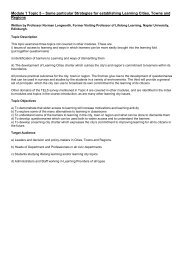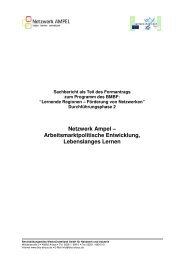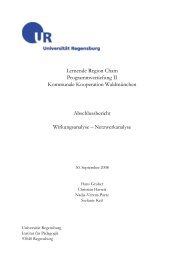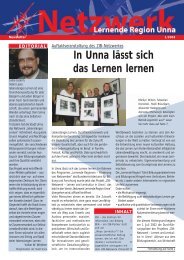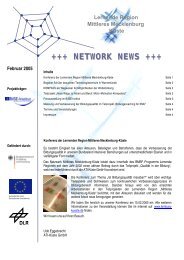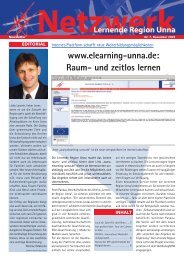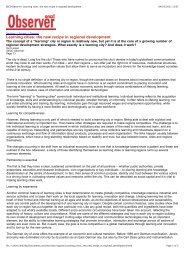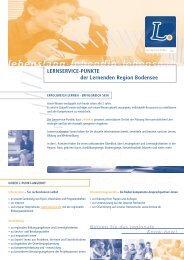SWOT-analysis as a basis for regional strategies - EUROlocal
SWOT-analysis as a basis for regional strategies - EUROlocal
SWOT-analysis as a basis for regional strategies - EUROlocal
Create successful ePaper yourself
Turn your PDF publications into a flip-book with our unique Google optimized e-Paper software.
in terms of the role and principles of the national development programmes are<br />
unlikely.<br />
The role and <strong>for</strong>m of the Norwegian Regional Development Programmes is somewhat<br />
different from other national programmes included in the study. The role of the<br />
Regional Development Programmes is to <strong>as</strong>sist in the co-ordination of different<br />
planning instruments in partnership between municipal and <strong>regional</strong> state authorities,<br />
economic and labour market actors. Regional Development Programmes are to<br />
supplement the strategic guidelines of the County Plans (fylkesplan), which is the<br />
main <strong>regional</strong> planning instrument within the Norwegian counties. Whilst the<br />
objectives of the County Plans are strategic, the aim being to provide a kind of<br />
politico-strategic steering document <strong>for</strong> all other planning activities taking place in the<br />
county, Regional Development Programmes provide a supplement to these<br />
programmes, which specifies the strategic aims in a more concrete way.<br />
1.1.3 Objective 1 and 2 Programmes in Denmark, Sweden and Finland<br />
The main goal of the Objective 1 programme is to promote the development and<br />
structural adjustment of regions where development is lagging behind. Objective 2<br />
programmes in turn concentrate upon actions that support the economic and social<br />
conversion of are<strong>as</strong> facing restructuring difficulties. These goals, and the concrete<br />
me<strong>as</strong>ures through which these wider policy objectives are pursued, are outlined in<br />
Single Programming Documents (SPDs), which define key <strong>strategies</strong> and priorities,<br />
specific objectives and an evaluation of expected impacts. (The programmes selected<br />
<strong>as</strong> c<strong>as</strong>e studies can be seen in table 1.1 on page 6.)<br />
The preparation and monitoring of the programmes is clearly regulated by the<br />
Commission through its regulations and guidelines. These place strong emph<strong>as</strong>is on<br />
the partnership principle in the programming process <strong>as</strong> a whole, requiring the<br />
participation of <strong>regional</strong> and local authorities and other competent public authorities,<br />
economic and social partners, and “other relevant competent bodies” in the process.<br />
Although the regulative framework does not explicitly refer to <strong>SWOT</strong> <strong>analysis</strong> <strong>as</strong> an<br />
instrument <strong>for</strong> such strategy <strong>for</strong>mation, its importance within the planning process<br />
becomes obvious in the more methodological planning instruments, such <strong>as</strong> the<br />
Vademecum, which outlines in explicit detail the stages of the programming process,<br />
<strong>as</strong> well <strong>as</strong> its contents (e.g. content of the Single Programming Document, SPD),<br />
which outlines the required description of the current situation (in the region in<br />
question) <strong>as</strong> follows:<br />
A description, quantified where it lends itself to quantification, of the current<br />
situation with regard to disparities, gaps and potential <strong>for</strong> development<br />
(Objective 1) or conversion (Objective 2). Includes an <strong>analysis</strong>, verified in<br />
the ex-ante evaluation … of the strengths, weaknesses and potential of the<br />
Member States, region(s) or sector concerned.<br />
No explicit indication <strong>as</strong> to how such <strong>analysis</strong> should be per<strong>for</strong>med is made nor to its<br />
strategic aim and role. These are however outlined (at le<strong>as</strong>t to some extent) in other<br />
methodological materials provided by the European Commission <strong>for</strong> the purposes of<br />
evaluating and participating in the programming process. An example of such<br />
13



